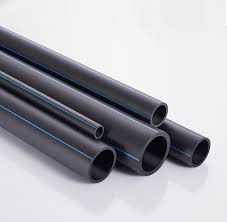Nov . 10, 2024 15:07 Back to list
Connecting HDPE to Steel Pipes for Enhanced Durability and Performance Solutions
Connecting HDPE to Steel Pipe A Comprehensive Guide
The connection between High-Density Polyethylene (HDPE) and steel pipes has become increasingly important in various industries, including water supply, gas distribution, and sewage systems. As infrastructure ages and the need for durable, efficient, and cost-effective solutions grows, the fusion of HDPE with steel has emerged as a viable option. This article aims to explore the advantages, methods, and considerations in connecting HDPE to steel pipes.
Understanding the Materials
HDPE is a versatile thermoplastic widely recognized for its resistance to impact, chemicals, and moisture. It is lightweight, making it easier to handle and install than traditional materials. These traits have made HDPE a favorite in applications involving potable water, sewage, and drainage systems.
On the other hand, steel pipes are known for their strength and durability. They can withstand high pressures and are highly resistant to damage from heavy loads and environmental factors. However, they are also susceptible to corrosion, which can lead to premature failure if not adequately protected.
Advantages of HDPE-Steel Connections
1. Corrosion Resistance One of the primary advantages of HDPE is its resistance to corrosion. When connecting HDPE to steel pipelines, the HDPE component can help mitigate corrosion issues that steel may face, especially in aggressive environments.
2. Flexibility and Stress Reduction HDPE offers flexibility that can absorb ground movements, thermal expansions, and contraction better than rigid steel pipes. This characteristic is particularly beneficial in areas prone to seismic activity or ground shifts.
3. Cost-Effectiveness While the initial cost of steel may be higher than HDPE, the overall savings in terms of maintenance and longevity make the combination cost-effective over time. Additionally, the lightweight nature of HDPE can lead to reduced transportation and installation costs.
4. Improved Flow Characteristics With a smooth interior surface, HDPE reduces friction losses, enhancing the flow of water or gas compared to traditional materials. This improved flow rate can lead to energy savings in pumping applications.
Connection Methods
Connecting HDPE to steel pipes requires careful consideration of the methods employed to ensure long-term integrity and performance
. Here are some popular methodshdpe to steel pipe connection product

1. Mechanical Couplings These involve using fittings that can join HDPE with steel. Mechanical couplings can accommodate the differences in the thermal expansion between the two materials. They are often easy to install and reliable.
2. Flanged Connections This method involves welding flanges to both the HDPE and steel pipes. The flanges are then bolted together, providing a strong and sealable joint. Flanged connections are particularly useful in high-pressure applications.
3. Fusion Welding While generally not recommended for direct fusion between HDPE and steel, you can use hybrid approaches by fusing an HDPE fitting specifically designed for mechanical coupling to a steel component. This approach ensures that each material maintains its integrity while creating a reliable joint.
4. Transition Fittings These specialty fittings are designed to connect HDPE to steel seamlessly. They often include features to accommodate the differences in diameter and material properties.
Considerations When Connecting HDPE to Steel
When planning a connection between HDPE and steel pipes, several considerations must be taken into account
1. Pressure Ratings Ensure that the selected method can handle the required pressure ratings for the application. HDPE has different pressure ratings, and the connection must be appropriate for the entire system's needs.
2. Compatibility Check the compatibility of the materials. Certain coatings on steel pipes may react with HDPE, leading to potential failures.
3. Environmental Conditions Consider environmental conditions like temperature fluctuations and soil movements, which can affect both materials differently.
4. Regulatory and Industry Standards Adhering to local codes and standards is critical for ensuring safety and compliance in installation.
Conclusion
The connection of HDPE to steel pipes is a practical solution in modern infrastructure, offering significant advantages, including corrosion resistance, flexibility, and cost-effectiveness. When planned and executed correctly, these connections can enhance the durability and functionality of utility systems. By understanding the properties of both materials and employing appropriate connection techniques, industries can create robust pipelines that thrive under diverse conditions.
-
High-Quality PVC Borehole Pipes Durable & Versatile Pipe Solutions
NewsJul.08,2025
-
High-Quality PVC Perforated Pipes for Efficient Drainage Leading Manufacturers & Factories
NewsJul.08,2025
-
High-Quality PVC Borehole Pipes Durable Pipe Solutions by Leading Manufacturer
NewsJul.08,2025
-
High-Quality PVC Borehole Pipes Reliable PVC Pipe Manufacturer Solutions
NewsJul.07,2025
-
High-Quality UPVC Drain Pipes Durable HDPE & Drain Pipe Solutions
NewsJul.07,2025
-
High-Quality Conduit Pipes & HDPE Conduit Fittings Manufacturer Reliable Factory Supply
NewsJul.06,2025

